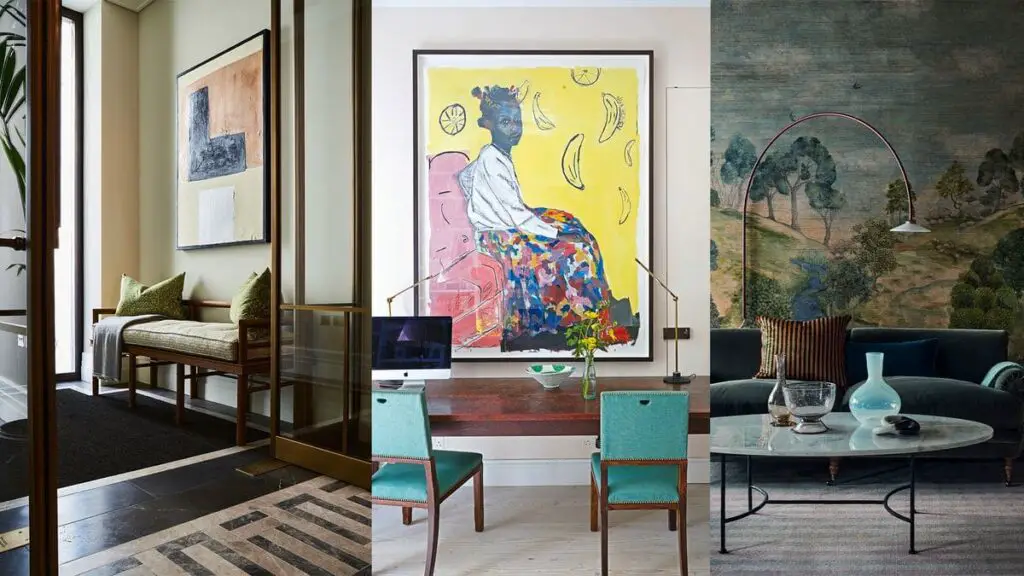Creating a harmonious blend of art and living space in your home doesn’t just elevate the aesthetic appeal; it personalizes and breathes life into every corner. Here’s how to thoughtfully integrate artwork into your home decor, ensuring each piece not only stands out but also complements the environment it inhabits.
1. Understand Your Space
Before introducing art into your rooms, consider the character of each space—its size, lighting, color scheme, and function. Art doesn’t exist in a vacuum; it interacts with its surroundings. For instance, a bright, airy living room with ample natural light might be perfect for a vibrant, large-scale painting, whereas a smaller, dimly lit area could benefit from lighter, more reflective pieces like sculptures or glass art that can help to brighten the space.
2. Choose Art That Reflects Your Personality
Art is a reflection of the self. Choose pieces that speak to you personally. This doesn’t mean every piece must be a profound statement, but there should be a personal connection or story behind the art you display. This connection not only makes the artwork more meaningful but also ensures that your home decor feels authentic and unique to you.
3. Mix Mediums for a Dynamic Aesthetic
Don’t be afraid to mix different types of art. Combining oil paintings with digital prints, sculptures, and textile art can create a dynamic environment that stimulates the senses. Each medium can offer different textures and dimensions, making your space more engaging and visually interesting.
4. Consider the Scale and Placement
The size of the artwork in relation to your space is crucial. A common mistake is hanging small pieces on large walls where they become lost. Conversely, a piece that is too large can overwhelm a space. Consider the wall size and place pieces at eye level for maximum impact. In larger rooms, consider using a single large piece as a focal point or group smaller pieces together to create a gallery wall.
5. Use Art as a Color Palette Inspiration
Artwork can serve as an excellent inspiration for your room’s color palette. Choose two or three hues from your favorite piece and echo these colors in your room’s textiles, such as rugs, cushions, and drapes. This approach can create a cohesive look, tying the room’s elements together with the artwork.
6. Lighting is Key
Lighting can dramatically affect the appearance of art. Natural light is best for most art, but in spaces without adequate sunlight, consider using gallery lights. These can be installed to highlight the artwork and bring out its best colors and details. Adjustable lights can also alter the mood of the room, depending on the time of day or the ambiance you want to create.
7. Rotate Artwork for Freshness
Keep your decor dynamic by rotating your artwork periodically. This can be as simple as switching pieces between rooms or as involved as choosing new artwork for different seasons or moods. This not only refreshes your decor but also reinvigorates your relationship with the art you own, helping you appreciate it anew.
Integrating artwork into your home decor is a deeply personal endeavor that blends artistry with intimacy. By considering these tips, you can create a living space that not only looks spectacular but also feels uniquely yours, enriched with stories and personalities that resonate through its walls.


